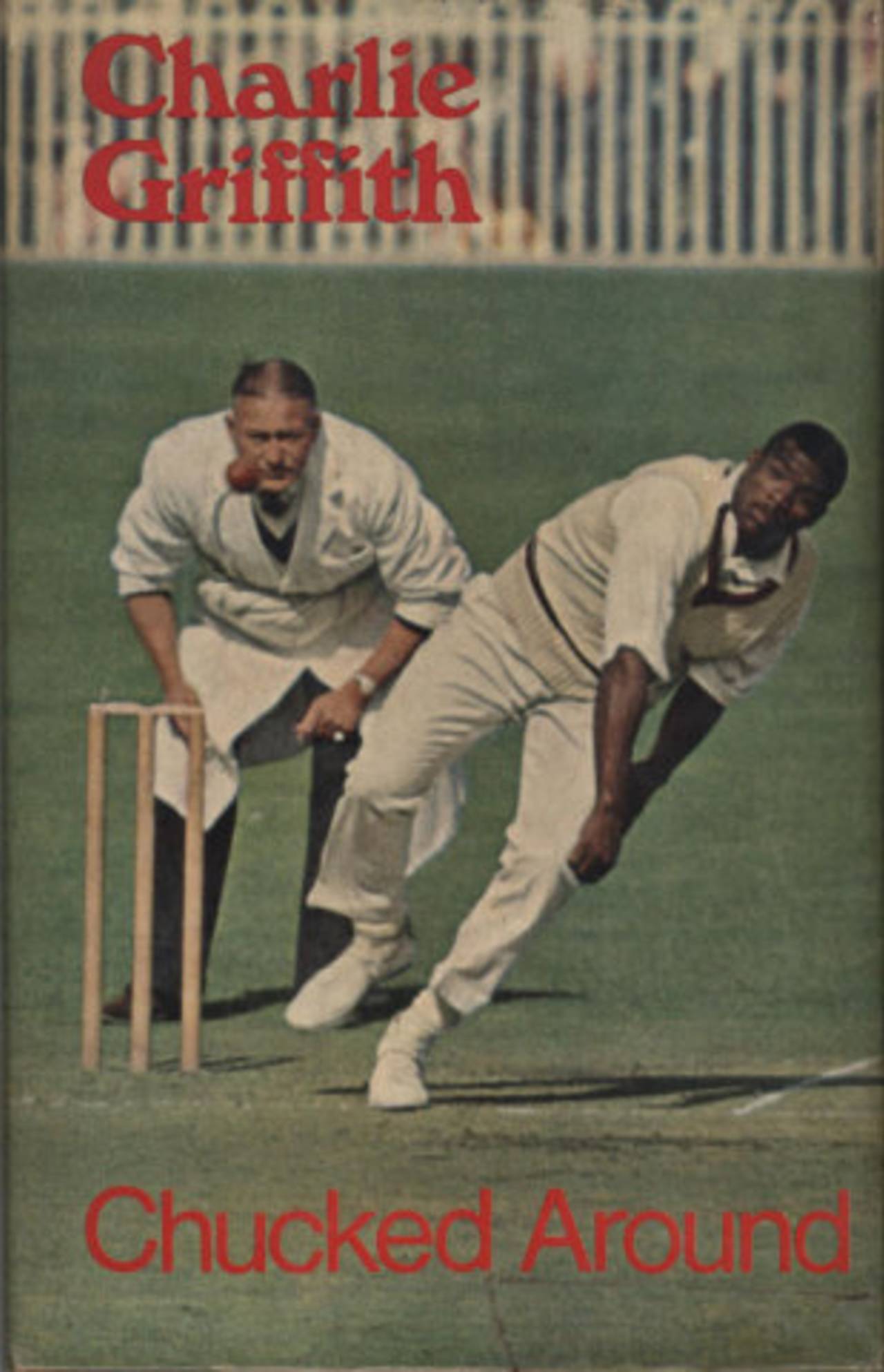Not enforcing the follow-on and losing, and old bowlers
When teams paid for not forcing the issue, the oldest to take five- and 10-fors, Charlie Griffith's book, the fearsome foursome, and Bradman the bowler

Tell-tale title: Charlie Griffith's Chucked Around • ESPNcricinfo Ltd
I believe the only instance of this happened in Durban in 1949-50, when South Africa bowled Australia out for 75 after making 311 themselves. South Africa's captain Dudley Nourse decided to bat again, but his side made only 99, leaving Australia 336 to win - which they reached for the loss of five wickets, Neil Harvey making an undefeated 151. The Wisden match report states: "After at one time looking almost certain to be defeated, Australia staged a dramatic recovery and gained a glorious victory with only 25 minutes to spare... Harvey adopted a dogged style quite out of keeping with his normal game and stayed five hours 30 minutes without making a mistake. This innings of extraordinary patience and skill, which enabled Australia to record their remarkable victory, left a lasting impression upon all who witnessed it." There is perhaps a case for saying this also happened in Centurion in 1999-2000, in the infamous match in which both sides forfeited an innings: South Africa led England by 248 on first innings, but lost the game.
The oldest man to achieve a five-for in a Test was the Australian slow left-armer Bert "Dainty" Ironmonger, with 6 for 18 against South Africa in Melbourne in 1931-32, in a match that started when he was 49 years 311 days old. Since he also took 5 for 6 in the first innings (South Africa were shot out for 36 and 45 on a vicious sticky pitch), he's also comfortably the oldest to take 10 wickets in a Test too. Click here for Gideon Haigh's superb 2006 profile of Ironmonger on Cricinfo. For a full list of the oldest takers of five in an innings, click here; or click here for the oldest to take 10 in a match.
Actually the answer is 563 runs, by England in Kingston in 1929-30. England made 863, but despite bowling West Indies out for 286, their captain, The Honourable Freddie Gough-Calthorpe, decided to bat again, running up 272 for 9 before declaring and setting West Indies the little matter of 836 to win. In his defence, it was a timeless Test (it was the final match of a series that was all square at 1-1), but it had to be left drawn with West Indies 408 for 5 after two days were rained off and England's players had to leave to catch the boat home.
My first thought was that it was the former Australian fast bowler Ian Meckiff, who was famously no-balled for throwing against South Africa in Brisbane in 1963-64 - but on checking I discovered that his 1961 life story was actually called Thrown Out. The book you're talking about was by another fast bowler of around the same time whose action was not universally approved - the West Indian, Charlie Griffith - and was published in 1970, shortly after Griffith's Test career came to an end.
That particular fearsome foursome - Andy Roberts, Michael Holding, Joel Garner and Colin Croft - played together in 11 Test matches between 1979-80 and 1981-82. West Indies won five and drew five of those games, and lost only one - to Australia in Melbourne in 1981-82. Coincidentally they also played together in 11 one-day internationals, winning eight (including the 1979 World Cup final against England at Lord's), and losing three.
Don Bradman didn't bowl that much, but he was a handy legspinner when he did turn his arm over. He took two wickets for 72 runs in Tests - the West Indian wicketkeeper Ivan Barrow lbw in the first Test in Adelaide in 1930-31, and Bradman's fellow big-scoring batsman Wally Hammond during the third Test of the Bodyline series in Adelaide in 1932-33 (Hammond was apparently livid at being bowled by a full-toss for 85). Bradman had only seven other bowling spells in Tests, all of them wicketless, the most famous of them coming at The Oval in 1938, when he injured his ankle while bowling during England's massive innings and was unable to take any further part in the match (it is claimed that Hammond only declared at 903 for 7 after being assured that The Don would not be able to bat in this timeless Test). In first-class cricket he took 36 wickets at the respectable average of 37.97, his best return being 3 for 35 for the Australian tourists against Cambridge University at Fenner's on his first tour in 1930 (he also took 3 for 68 in the second innings: his victims included the England Test batsman Tom Killick - twice - and the future West Indies captain Jackie Grant).
Steven Lynch is the editor of the Cricinfo Guide to International Cricket (reviewed here). If you want to ask Steven a question, use our feedback form. The most interesting questions will be answered here each week